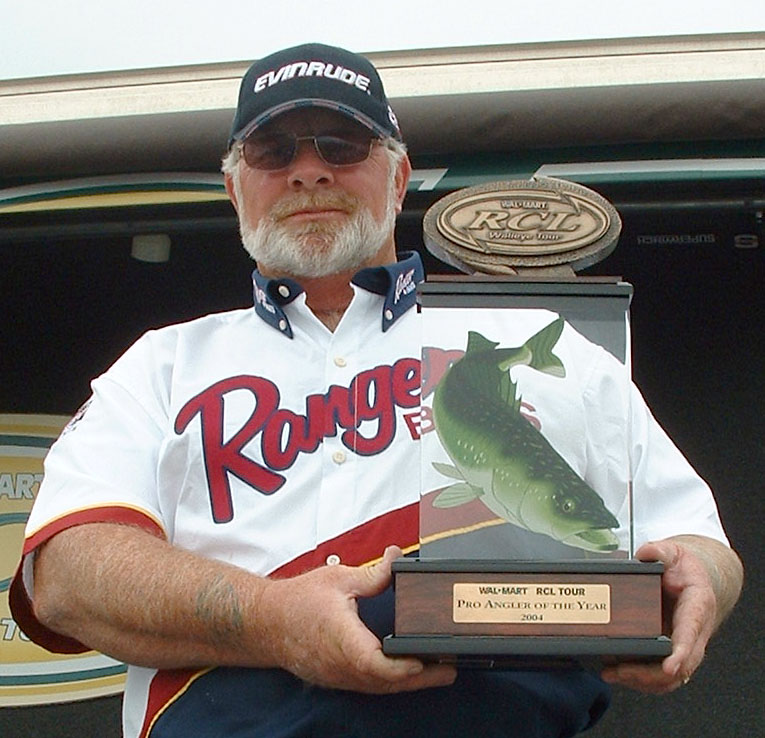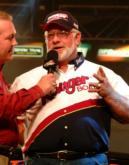Ask the Walleye Pro: Dennis Jeffrey

Q: Have you noticed behavior differences in naturally-produced versus stocked walleyes? Lots of guys around here say the stocked walleyes live around the weedline. How would you attack stocked walleyes?
-Looking for walleyes, Minnetonka, Minn.
A: I had to call my son-in-law Robert for this one. He’s a biologist for the North Dakota Game and Fish Department. He tells me that to his knowledge no studies have been done showing that stocked walleyes behave any differently than naturally-produced walleyes. We both feel that different fish focus on different food sources and that is where they spend most of their time in relation to their prey. Here on Sakakawea we have both walleyes that are stocked and walleyes that spawn naturally. Some stay in the weedlines and feed on minnows and leeches and some move out to deeper water and live on smelt. If your walleyes are living in the weeds then that is where you have to fish. You can troll spinners or crankbaits along the outer edges of the weeds and have great success or you could pitch jigs into and around open areas. Another fun thing to do is to use a slip bobber around the edge of the weeds.
Q: I read in our newspaper’s weekly fishing reports that the walleyes are located on the reefs. I’ve been fishing walleyes my whole life but I guess I don’t what these “reefs” are. Any help?
-Chuck, Webster, Wis.
A: Chuck, reefs are a great place to look for fish. Some of these reefs are natural and some are manmade. I guess I would go to your local bait shop and see if they have a good paper map of the lake you are fishing. I would then have the bait-shop owner mark the reefs on your map. Lots of maps will show you the reefs and have them named already.
Q: I know guys are catching walleyes these days by simply using a jig with a piece of plastic. Is this plastic tipped on to the jig like a leech or is it something you slide on to the body of the jig? Could you give me a few suggestions on what types of jigs and what types/colors of plastics to use? The idea of jigging without live bait really appeals to me.
-PlasticPete, Detroit Lakes, Minn.
A: I hear you, plastic does work. Well to me it’s not plastic so much as it is rubber. You can use anything from a twister tail or a rubber worm to grubs, crawfish tubes, and lizards. Pete, I would start by buying some 1/8-ounce and 1/4-ounce jigs with a barb collar and mix up the colors. Then buy some Gulp 3-inch minnows and some 3-inch Powerbait grubs. Slip these tails or grubs on to the jig hook and slide it up onto the barb just below the head of the jig. I would also recommend trying some Lindy Fuzz-E-Grubs. They do work and you will catch fish.
Q: How is the Sakakawea portion of the Missouri River different than the Oahe portion?  Which area has the better walleye fishing?
Which area has the better walleye fishing?
-Marshall, Minn.
A: I want to answer your second question first. On Sakakawea the east end has excellent fishing with an abundance of 14- to 23-inch walleyes that can be caught all year from Garrison to Indian Hills. But the big girls, (5 to 9 pounds) are from the Hills to Newtown, N.D., the best area being behind Deepwater Bay and the famous Van-Hook arm.
Now onto Lake Oahe. I like the Pierre, S.D., area. Oahe has made a great comeback and they now have walleyes from one end of the lake to the other. The fish are like footballs (15 to 28 inches) and there are lots of them. Follow the FLW Walleye Tour Championship. It’s being held out of Pierre this year and it starts on Oct. 4.
Let me get Robert to answer your first part. He says Sakakawea and Oahe during years of high water are very similar to each other in fish productivity, water quality and fish behavior. When the two reservoirs begin to reach low water levels is when they begin to differ in a couple aspects. First, the Oahe Dam is constructed differently in regards to where the water is drawn from for hydro-electricity. Oahe draws its water mid-level, meaning that the ever important cold water isn’t being drawn out all summer as the surface temperatures climb. In these two reservoirs, this is very important because the main forage base in both is smelt. Adult smelt need cold-water habitat to survive during the hot summer months. Oahe has been able to establish gizzard shad recently as a new forage base during these low water years and as a result the fishery has flourished.
The Sakakawea Dam was constructed with a bottom draw for its water meaning that during the course of a drought every bit of water drawn out of the reservoir for hydro-electricity is drawn from the very bottom of the lake. This means that the cold water the smelt need to survive is sent down the river below the dam. While Oahe has been able to establish gizzard shad, Sakakawea is unable to do so because of the biology of the shad. They can only survive so many days of ice cover and Sakakawea is covered many more days than is Oahe. The walleyes in Sakakawea have adapted to feeding on other food sources such as young of the white bass, perch, and goldeye.
Dennis Jeffrey of Garrison, N.D., has been a professional walleye fisherman since 1998. His greatest angling achievement to date is winning the 2004 FLW Walleye Tour Angler of the Year award. At age 55, Jeffrey has been married to his wife Irene for 36 years, who is his No. 1 fishing partner and has also competed as a co-angler on the tour. Working with numerous fishing organizations, Jeffrey’s goal is to get as many youth involved in the sport as possible. Jeffrey’s sponsors include Ranger Boats, Evinrude, Minn Kota, Lowrance, G.Loomis and Moritz Sport & Marine.